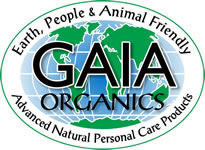|
|
 |
|
 |
| |
| Gaia uses the only two natural UV-A sunscreens approved by the US FDA, namely Zinc Oxide and Titanium dioxide (Gaia do ‘not’ utilise nano-particles). We will not use the 3rd approved chemical Avobenzone, because this is entirely synthetic and is incompatible with the former chemically inert mineral options, which simply act as microscopic mirrors on the skin and so safely refract (scatter) all UV-light away from such protected areas. Unless a product is selected to contain ‘sufficient’ titanium dioxide and/or zinc oxide or alternatively Avobenzone (trade-name: Parsol 1789) (butyl methoxydibenzoylmethane) [or not passed for safety in the U.S., Mexoryl (bicyclo[2.2.1]heptane-1-methane sulfonic acid,3,3'-(1,4-phenylenedimethylidyne)bis[7.7]-dimethyl-2-oxo), or Tinosorb S (bis-ethylhexyloxyphenol methoxyphenyl triazine) and/or Tinosorb M (methylene bis-benzotriazolyl tetramethylbutylphenol), and that such preparation is used in sufficient quantity (2mg/cm2 - usually 4 times that used in real-life, ie), you will not be adequately protected from UV-A. Chemical types are dangerously absorbed into the skin, whilst mineral types lie safely on the surface, so from a safety perspective, the mineral types are clearly superior. Avobenzone ‘absorbs’ the whole UVA spectrum at 310-400 nm. It does not provide any UV-B absorption. Titanium dioxide and Zinc oxide are approved UV-A minerals and provide ‘refractive’ protection against the entire UV spectrum. The most commonly used benzophenones (oxy & dioxy-benzones) only protect in the 320-340 nm portion of the UVA range and hence are not true UV-A screens, yet products can claim to be ‘broad spectrum’, since this is literarily correct, irrespective of how weak or incomplete such protection might be. Gaia also use nutritional Para-amino benzoic acid (PABA),
a FDA approved natural UV-B sunscreen. Industry-wide use of synthetic
PABA esters have created reputations as skin sensitisers, yet nutritional
PABA, a natural component of folic acid and a B-complex vitamin
constituent of many whole-foods, when stabilised with anti-oxidants
such as green tea extracts, remains the safest UV-B screen available
besides the refractive minerals, but unlike these, actually bonds
to the skin’s surface proteins, affording durable UV-B absorptive
protection should the minerals be inadvertently rubbed off by clothing
or inevitably be toweled off. Actinic keratosis (a scaly or crusty bump that forms on the skin surface) and squamous cell carcinoma (a rodent ulcer), are benign pre cancers and superficial cancers respectively, both caused by UV-B exposure. Basal cell carcinoma and the usually fatal malignant melanoma are far more serious deep-seated skin cancers caused by UV-A exposure. Clearly both UV-B and UV-A are best avoided, if not carefully controlled; yet SPF-type sunscreen products usually fail dismally to address UV-A. This is the principal rationale behind our impassioned educational exposé and provision of carefully formulated products to meet this dire need. In particular, green tea extracts are effective cancer preventive agents for many of the adverse effects of sunlight on human health and may thus serve as natural alternatives for photoprotection, in part by inhibiting the erythema response evoked by UV radiation, reducing the number of sunburn cells, protecting epidermal Langerhans cells from UV damage and reducing the DNA damage that forms after UV radiation (Elmets C et al, J Am Acad Dermatol, 44(3), 2001); possess antioxidant and sunscreen activity, as well as UV-B signal transduction blocking activity (Einspahr J et al, Recent Results Cancer Res, 163:151-64; 2003); inhibit UV-induced activation of transcription factor and proinflammatory pathway (Xia J et al, Int J Mol Med, 16(5), 2005); enhance chemopreventive apoptosis selectively in focal basal cell hyperplastic areas of the epidermis (Lu Y et al, Carcinogenesis, 26(8), 2005); affects several biomarkers that are involved in UV-carcinogenesis, including inhibition of angiogenic factors and recruitment of cytotoxic T cells in the tumor microenvironment (Mantena S et al, J Nutr, 135(12), 2005); protects keratinocytes from photodamage (Huang C et al, Arch Dermatol Res, 296(10), 2005); reverse extracellular matrix degradation induced by UV-A (Lee J et al, J Dermatol Sci, 40(3), 2005) and protects against UV induced DNA damage (Morley N et al, Photodermatol Photoimmunol Photomed, 21(1), 2005) and prevents photocarcinogenesis via inhibition of angiogenic factors and induction of antitumor immune reactivity (Mantena S et al, Photochem Photobiol, 81(5), 2005). Most Gaia Organics products are formulated with green tea. |
|
||
| |
||
|
||
| |
||
|
Gaia is copyright © 2006 Gaia all rights
reserved Designed by Webs The Way |
||
|
Page Counter as of January 2008 |
